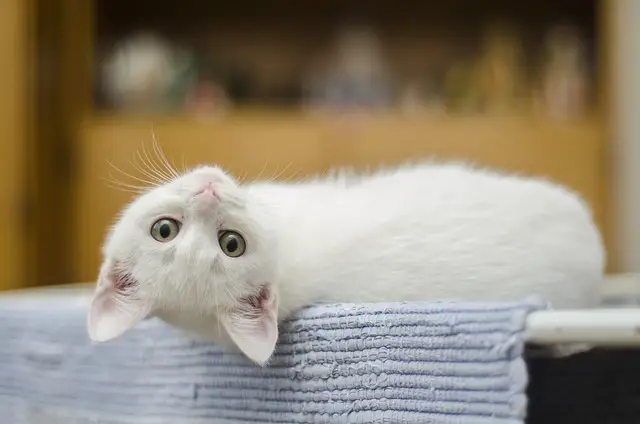Cats are known for their independent and feisty personalities, sometimes leading to fights with other cats. As a cat owner, it’s essential to understand how to tell which cat is winning in a fight to intervene if necessary.
While letting cats work out their differences independently may be tempting, it’s important to remember that fights can lead to severe injuries or even death.
One way to tell which cat wins is to look for signs of aggression and submission. The cat on the offensive, with its ears back, fur raised, and claws out, is likely winning the fight.
The cat on the defensive, with its ears flattened, tail tucked, and body crouched, is likely losing the fight. However, it’s important to remember that cats are skilled at hiding their injuries, so it’s not always easy to tell who wins based on physical appearance alone.
Another way to tell which cat wins in a fight is to listen for vocalizations.
Cats winning a fight may make loud yowls or growls, while those losing may make softer, more pitiful sounds. However, it’s important to remember that some cats may be silent during a fight, so this method is not foolproof.
Ultimately, the best way to tell which cat wins in a fight is to observe their behavior and body language and intervene if necessary to prevent serious injury.
Understanding Cat Fights
Why Do Cats Fight?
Cats are territorial animals that may fight over resources such as food, water, or a comfortable resting spot. They may also fight to establish dominance or to defend their territory from intruders. In some cases, cats may fight because they do not like each other.
How Do Cats Fight?
Cats use a variety of tactics in fights, including biting, scratching, and hissing. They may also puff up their fur to appear larger and more intimidating. In some cases, cats may try to avoid physical confrontation by posturing and vocalizing to establish dominance.
When cats fight, it is essential to understand that they may not be fighting to the death. Many cat fights are displays of dominance and do not result in serious injury. However, it is still important to intervene if a fight becomes too aggressive or if one cat appears to be in danger.
To determine which cat wins in a fight, looking for signs of dominance is essential. The dominant cat will typically be the one that is standing tall, with its ears forward and its tail held high.
It may also be the cat doing most of the attacking and vocalizing.
In conclusion, understanding cat fights is essential for any cat owner. By knowing why cats fight and how they fight, owners can better intervene and prevent serious injury.
Identifying the Winning Cat
Body Language
When cats fight, their body language can give away who is winning. A dominant cat typically has an upright posture, tail high, and ears forward. They may also puff up their fur to make themselves appear larger and more intimidating.
On the other hand, a submissive cat will crouch down with their tail between its legs and ears flattened against its head. They may also try to avoid eye contact with the dominant cat.
Sounds
Cats also use vocalizations to communicate during a fight. For example, a winning cat will often growl or hiss loudly, while a losing cat may make high-pitched yowls or meows.
However, it’s important to note that some cats may make these sounds as a defensive mechanism, even if they are winning the fight.
Injuries
Injuries can also be a good indicator of which cat is winning. For example, a cat with more scratches or bite marks is likely the losing cat.
However, it’s important to note that some cats may have a higher pain tolerance than others and may not show visible signs of injury even if they lose the fight.
Overall, observing a cat’s body language, sounds, and injuries is essential to determine which cat is winning in a fight. However, it’s also important to note that cats may have different fighting styles and personalities, so there is no definitive way to determine a winner.
Preventing Cat Fights
Spaying and Neutering
One of the most effective ways to prevent cat fights is to spay or neuter your cats. This reduces their desire to mate and reduces their aggression towards other cats. However, cats not spayed or neutered are more likely to fight, especially males.
Spaying and neutering also help to prevent unwanted litter of kittens, which can contribute to the overpopulation of cats.
Separating Cats
If you have multiple cats, it’s essential to separate them if they are not getting along. This can be done by providing separate areas for each cat, such as different rooms or areas of the house.
If the cats are fighting over resources, such as food or water, providing multiple bowls in different areas of the house is essential. This can help to reduce competition and prevent fights.
Training and Socialization
Training and socialization can also be effective in preventing catfights. Cats who socialize with other cats from a young age are less likely to be aggressive towards other cats.
Introducing cats slowly and carefully is crucial, allowing them to get used to each other’s presence before allowing them to interact. Positive reinforcement training can also be effective in reducing aggression and preventing fights.
In summary, preventing cat fights can be achieved through spaying and neutering, separating cats, and training and socialization. These methods can help to reduce aggression and prevent fights, creating a more peaceful and harmonious environment for your cats.
[su_box title=”Affiliate Disclosure”]This website is supported by its readers. Please assume that all links are affiliate links. If you make a purchase from one of the links we will make a commission from Amazon. Thank you.[/su_box]




